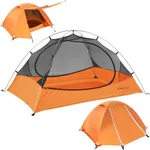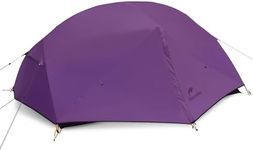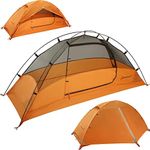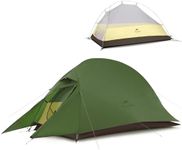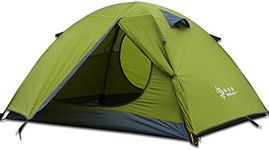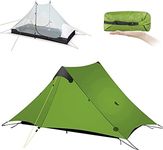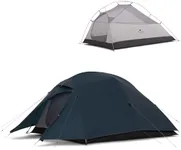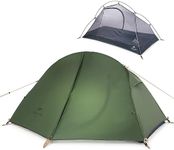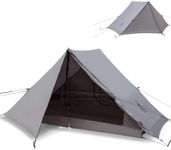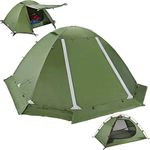Buying Guide for the Best Ultralight Tents
Choosing an ultralight tent is all about balancing weight, comfort, durability, and ease of use. These tents are designed for people who want to carry as little as possible, often for backpacking or long-distance hiking. When picking the right ultralight tent, it's important to think about where and how you'll use it, the weather conditions you expect, and how much space you need. Understanding the key features will help you make a choice that keeps your pack light without sacrificing the essentials you need for a good night's rest.WeightWeight is the defining feature of ultralight tents, referring to how much the tent adds to your backpack. Lighter tents are easier to carry over long distances, but they may sacrifice some comfort or durability. Ultralight tents typically range from under 1 pound (very minimal) to about 3 pounds (more robust). If you prioritize speed and distance, go for the lightest option, but if you want a bit more comfort or plan to camp in rougher conditions, a slightly heavier tent might be better. Always consider the total weight, including stakes and poles, not just the advertised minimum.
CapacityCapacity tells you how many people the tent is designed to sleep. Most ultralight tents are made for one or two people. A solo tent is the lightest and most compact, perfect for solo hikers, while a two-person tent offers more space for gear or a companion but adds some weight. Think about whether you need extra room for comfort or gear storage, or if you’re willing to trade that for a lighter pack.
Season RatingSeason rating indicates the tent’s suitability for different weather conditions. Most ultralight tents are 3-season, meaning they’re built for spring, summer, and fall, handling rain and moderate wind but not heavy snow. If you plan to camp in mild to moderate conditions, a 3-season tent is ideal. For winter or harsh weather, look for a 4-season tent, but be aware these are usually heavier and less ventilated.
Setup StyleSetup style refers to how the tent is pitched. Some ultralight tents use traditional poles, while others are designed to be set up with trekking poles to save weight. Freestanding tents are easier to move and set up on hard ground, while non-freestanding tents are lighter but require staking and are best for soft ground. If you want the fastest, simplest setup, a freestanding tent is best, but if you’re comfortable with a bit more effort and want to save weight, a non-freestanding or trekking pole tent is a good choice.
Material and DurabilityThe materials used in ultralight tents affect both weight and durability. Common fabrics include silnylon, Dyneema, and polyester. Dyneema is extremely light and waterproof but can be expensive, while silnylon and polyester are more affordable and still quite light. Thinner fabrics save weight but may be less durable, so if you camp in rough terrain or want a longer-lasting tent, look for slightly heavier, more robust materials. If you’re careful with your gear and want the lightest option, thinner fabrics are fine.
VentilationVentilation is about how well the tent lets air flow, which helps reduce condensation inside. Good ventilation is important for comfort, especially in humid or rainy conditions. Look for tents with mesh panels, vents, or double-wall designs. If you often camp in wet or warm climates, prioritize tents with more ventilation. If you camp in cold, dry areas, less ventilation may be acceptable.
Interior Space and LivabilityInterior space includes the floor area, peak height, and vestibule space for gear. Ultralight tents often have a snug fit to save weight, so consider how much room you need to sit up, change clothes, or store your backpack. If you’re okay with a tight space, you can go lighter, but if you want more comfort or plan to spend time inside during bad weather, look for a tent with a bit more headroom and vestibule space.

